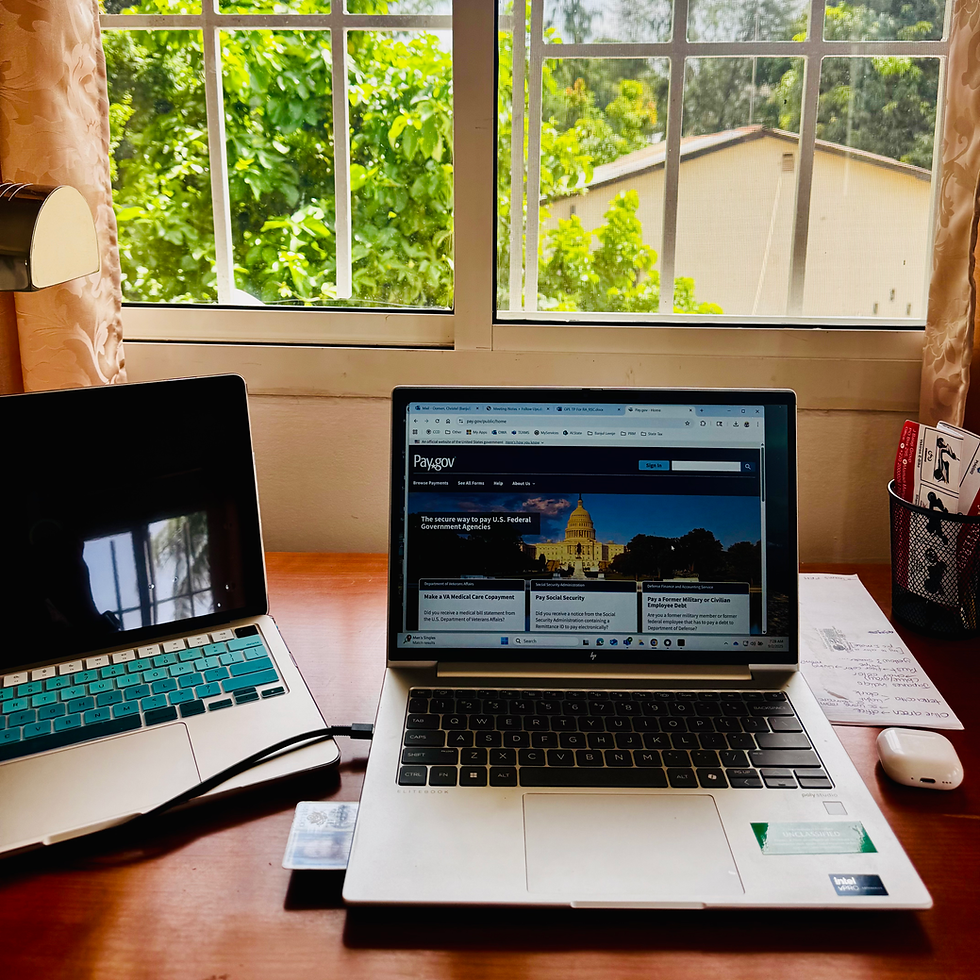Technology in our office
- Owner

- Oct 25, 2020
- 2 min read
Updated: Apr 14, 2021
Anytime you ask a bunch of diplomats what they would like to improve in the State Department the answer includes: technology.
We simply don’t have an impressive track record when it comes to integrating technology into our day-to-work. Point in place: most diplomats didn’t have computers on their desks until around 2002.

You still don’t have to look very far to realize technology gaps. For example, most shared workstations have computers that take five minutes to start up, or ten if you’re unlucky. Most of the software we use was built twenty years ago and never significantly updated.
Tech in consular affairs
But ever since I started work in consular affairs I’ve started to appreciate the Department’s technological abilities more. It’s actually scary to imagine how consular work was done before we had access to global databases, digitized immigration laws, and the Internet. We make data-driven decisions all day, so it’s a good thing the massive amount of data we need is right at our fingertips.
It’s no secret that we evaluate visa applications, as well as passport and other applications, by reviewing data bases from multiple databases, including from law enforcement agencies. Without high-functioning IT systems that would be impossible.
We also use nifty software that captures and compares biometric data, allows us to share new information globally without delay, communicate with diplomats anywhere in the world in a variety of ways, and send and receive messages securely.
I have to admit that when I worked in other sections of the embassy—the political section, for example—I was far less impressed with the use of technology. Sure, there was a classified computer, and getting through pretty much any door was a challenge because of digital security features, but tech generally wasn’t used to increase productivity or effectiveness. And still isn’t.
COVID-driven improvements
But a lot has changed in the past 5-10 years, partially because the Department caught up with the times (sometimes with the help of some tech-savvy diplomats), and partially because of COVID. The pandemic, for all the problems it has caused, has forced us to rely more on our technological capabilities.
It starts the minute I arrive at work. I connect to Teams, the software we increasingly use to communicate within and between offices, work on documents together, get and complete tasks, and receive feedback. We’ve had these capabilities for some time, but in this rapidly changing environment it’s more useful than ever to have a program that allows communication and file sharing in an organized and transparent way.
The best example is perhaps the way we’re dealing with our new responsibility of processing travel waivers, known as National Interest Exceptions. It’s pretty cool how we’ve leveraged our software and the fact that many diplomats are stranded in Washington to create a system that allows me—and any other consular officer in the world—to grant someone a travel waiver by submitting data to DC, which gets uploaded with a few clicks into a global database, which in turn instantly shows Customs Border Patrol who to admit. We don’t have to see each other, we don’t even have to be in the office for it to work.
Want to know more about a career with the State Department? Check out careers.state.gov or check it out on social media @DOSCareers







